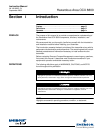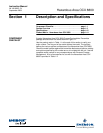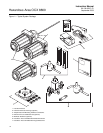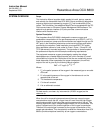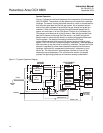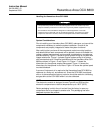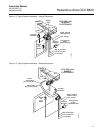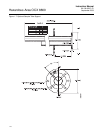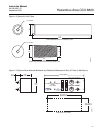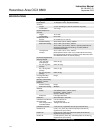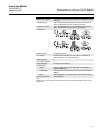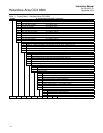
Instruction Manual
IM-106-880C, OI
September 2009
1-7
Hazardous Area OCX 8800
Handling the Hazardous Area OCX 8800
System Considerations
Prior to installing your Hazardous Area OCX 8800, make sure you have all the
components necessary to make the system installation. Ensure all the
components are properly integrated to make the system functional.
After verifying that you have all the components, select mounting locations
and determine how each component will be placed in terms of available line
voltage, ambient temperatures, environmental considerations, convenience,
and serviceability. Figure 1-3 shows a typical system wiring for a system with
integral electronics. Figure 1-4 shows a typical system wiring for a system
with remote electronics. Simplified installations for the Hazardous Area OCX
8800 are shown in Figure 1-5 and Figure 1-6. Figure 1-7 shows the
dimensions for the optional sample tube support. Figure 1-8 shows the
dimensions for the optional in-situ filters. Figure 1-9 shows the optional panel
mounted blowback.
A source of instrument air is required at the Hazardous Area OCX 8800 for
reference air, dilution air, and eductor air. Since the OCX 8800 is equipped
with an in-place calibration feature, provision should be made for connecting
test gas tanks to the OCX 8800 when it is to be calibrated.
NOTE
The electronics module is designed to meet Type 4X and IP66 and the
electronic components are rated to temperatures up to 185°F (85°C).
Retain packaging in which the unit arrived from the factory in case any
components are to be shipped to another site. This packaging has been
designed to protect the product.
It is important that printed circuit boards and integrated circuits are handled only when
adequate antistatic precautions have been taken to prevent possible equipment damage.
The Hazardous Area OCX 8800 is designed for industrial application. Treat each
component of the system with care to avoid physical damage. The probe may contain
components made from ceramics, which are susceptible to shock when mishandled.



